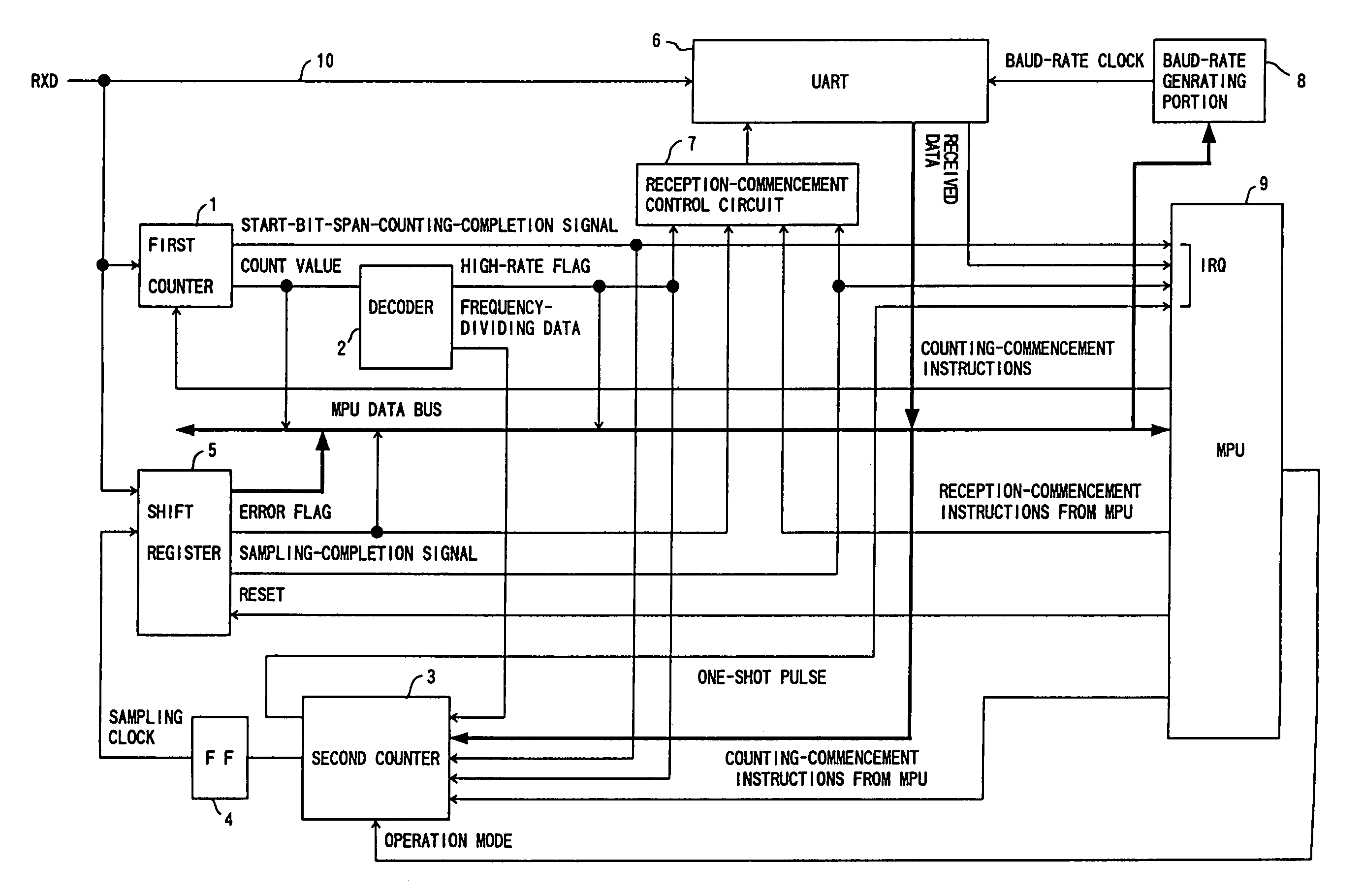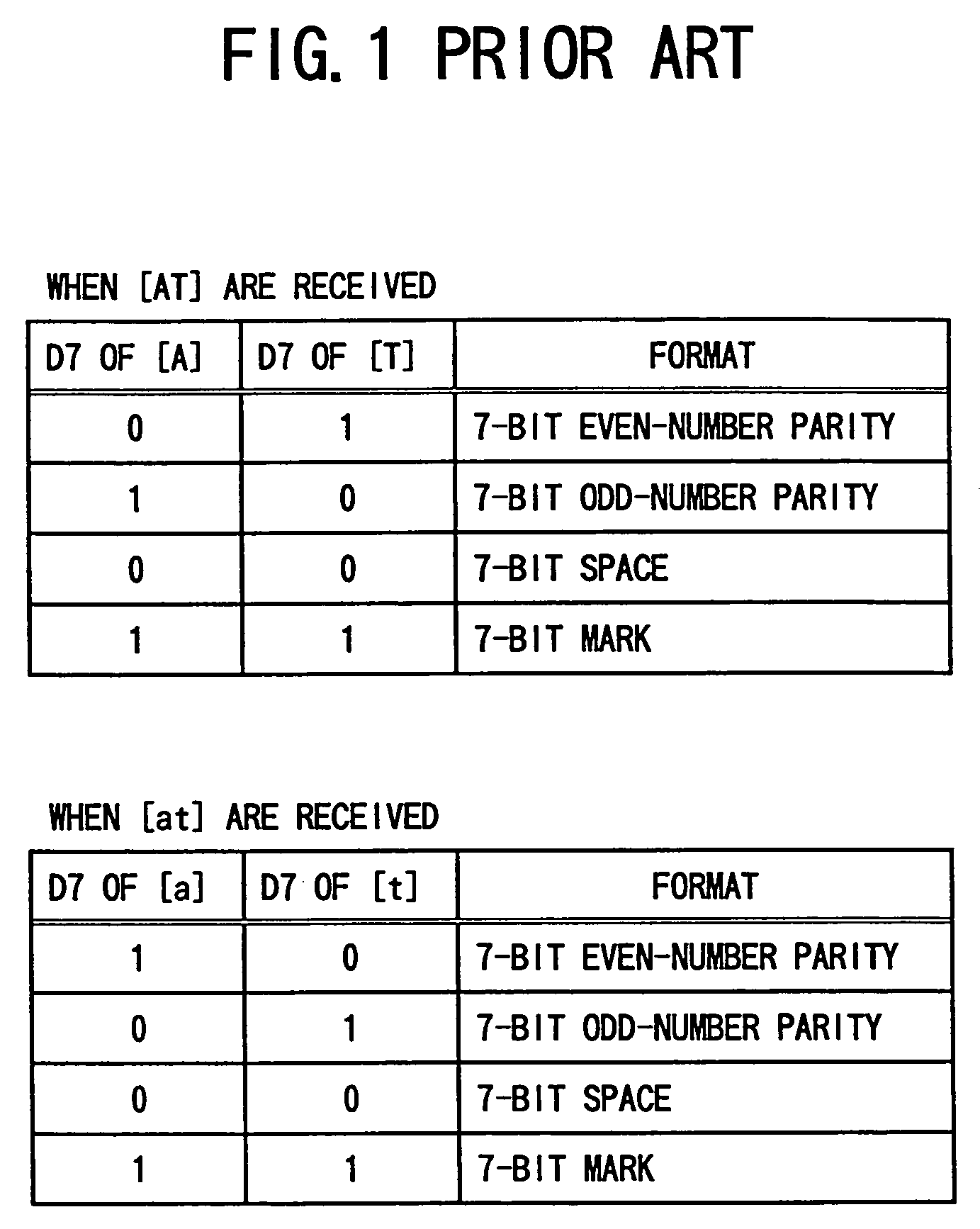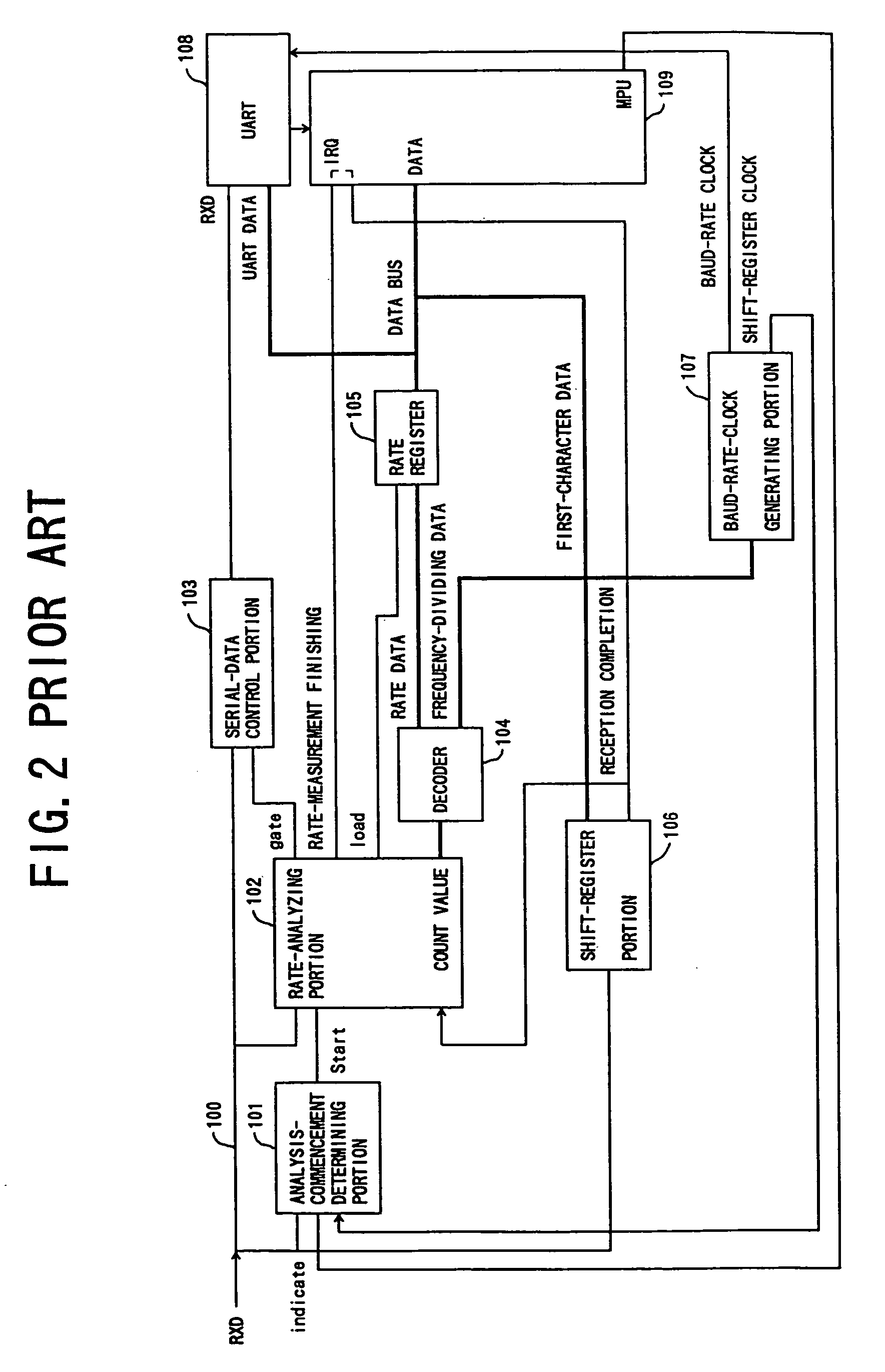At-command analyzing method
a technology of at-command and analyzing method, which is applied in the direction of synchronising signal speed/phase control, transmission monitoring, baseband system details, etc., can solve the problems of large circuit size, inability to perform functions in the above-described method, and complicated circuit arrangement, so as to reduce the size and complexity of the peripheral circuit
- Summary
- Abstract
- Description
- Claims
- Application Information
AI Technical Summary
Benefits of technology
Problems solved by technology
Method used
Image
Examples
Embodiment Construction
[0051]An embodiment of the present invention will now be described in accordance with drawings. FIG. 3 is a block diagram showing an AT-command analyzing device in the embodiment of the present invention.
[0052]In this embodiment, a first counter 1, a second counter 3 and a baud-rate generating portion 8 operate at a clock frequency of 3.6868 MHz.
[0053]The first counter 1 acting as a measuring portion is a counter which measures the span of the low period of the start bit of the first character of the AT command using received data transmitted through an RXD line 10 (serial line). The first counter 1 counts pulses of the clock for the low period starting from the time the level the received data decays, outputs the thus-obtained count value to an MPU data bus and a decoder 2, and outputs a counting-completion interrupt signal to an MPU 9. In a case of the highest baud rate of 230.4 kbps, the count value of the start bit of the first counter 1 is 10H. However, when considering the all...
PUM
 Login to View More
Login to View More Abstract
Description
Claims
Application Information
 Login to View More
Login to View More - R&D
- Intellectual Property
- Life Sciences
- Materials
- Tech Scout
- Unparalleled Data Quality
- Higher Quality Content
- 60% Fewer Hallucinations
Browse by: Latest US Patents, China's latest patents, Technical Efficacy Thesaurus, Application Domain, Technology Topic, Popular Technical Reports.
© 2025 PatSnap. All rights reserved.Legal|Privacy policy|Modern Slavery Act Transparency Statement|Sitemap|About US| Contact US: help@patsnap.com



